.
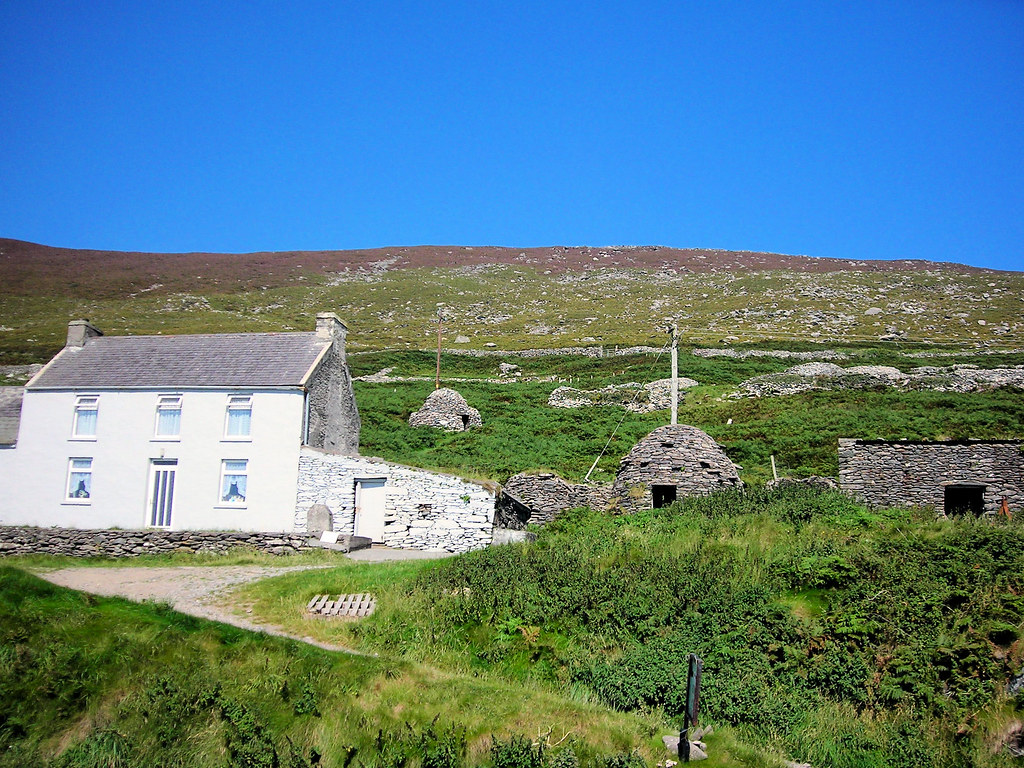
Beehive huts, Dingle Peninsula, Kerry.
The hillside along the Slea Head Drive in the townland of Fahan is
littered with Clocháns, or Beehive Huts. At one stage there were over
400 of these drystone, corbelled huts surviving, prompting one
antiquarian in the 19th century to refer to the area as the "City
of Fahan". These structures occur as single units or can also be
found within stone fort complexes. They are generally believed to have
been habitation sites, although the tradition of such buildings
continued up to the early 20th century for storage purposes. Dating
the huts is difficult because the skill of corbelling has been used in
Newgrange (3100 BC) and as recently as the 1950s. The huts along the
Slea Head Drive may well date to the 12th century when the incoming
Normans forced the Irish off the good land and out to the periphery of
the peninsula: photo by Jim Linwood, 7 September 2007
On Sundays I watch the hermits coming out of their holes
Into the light. Their cliff is as full as a hive.
They crowd together on warm shoulders of rock
Where the sun has been shining, their joints crackle.
They begin to talk after a while.
I listen to their accents, they are not all
From this island, not all old,
Not even, I think, all masculine.
They are so wise, they do not pretend to see me.
They drink from the scattered pools of melted snow:
I walk right by them and drink when they have done.
I can see the marks of chains around their feet.
I call this my work, these decades and stations --
Because, without these, I would be a stranger here.
Eiléan Ní Chuilleanáin: Studying the Language, from The Brazen Serpent, 1994
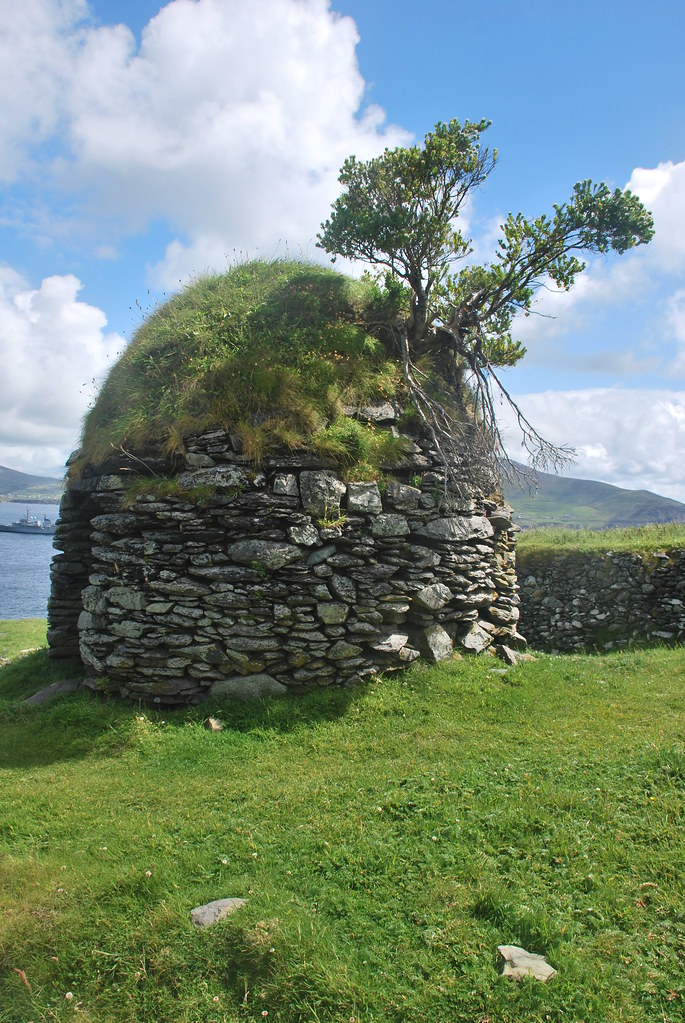
Beehive hut on Great Blasket Island, Kerry: photo by Guidje, 23 June 2011

Beehive hut, Dingle Peninsula, Kerry. The remains of a beehive hut on the bank of Mount Eagle Lake near Ventry. Is was fairly wet the day i was there and the mist can be seen coming in at the top corner: photo by Matt Smyth (granardblue), 7 August 2007
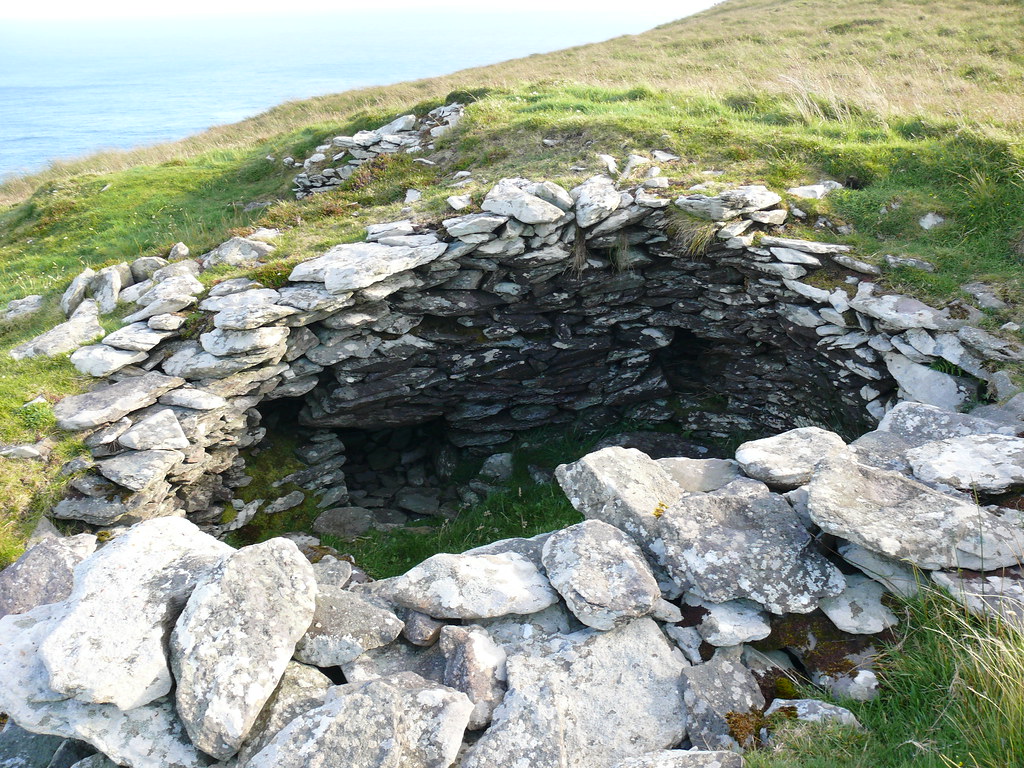
Beehive huts -- An clochán có-nascaithe. The remains of two perhaps conjoined huts, perhaps 1000 years old, south west side of the Great Blasket Island, Kerry: photo by Gan_Ainm1, 4 August 2011
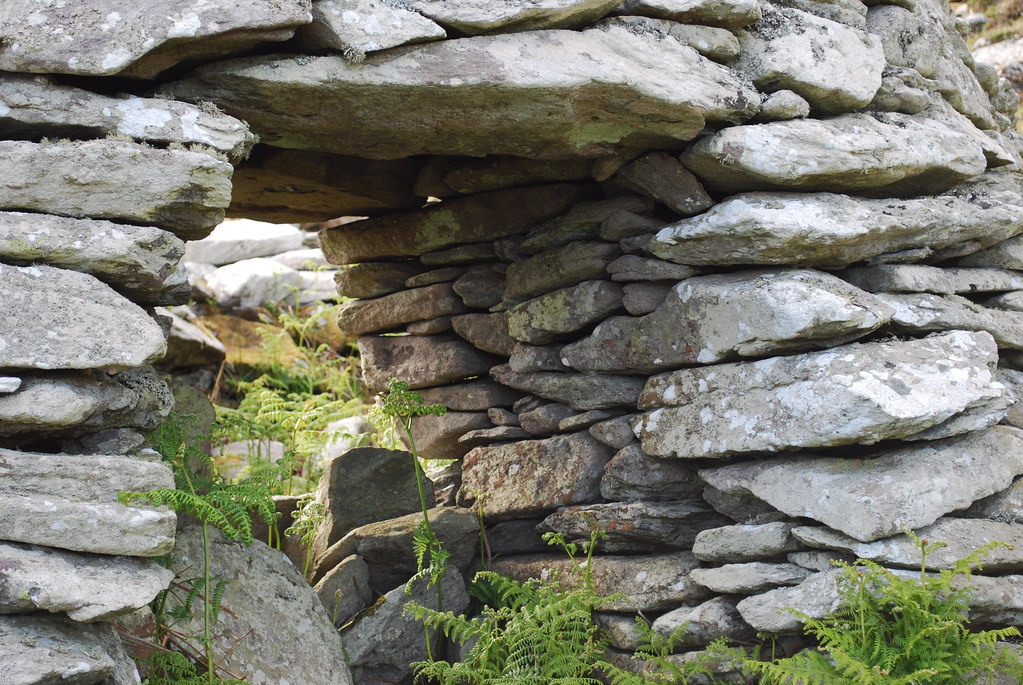
Beehive hut, Eagle Mountain, Dingle Peninsula, Kerry: photo by Aleksandra Piechorowska (olenka :)), 3 May 2009

Doorway. Beehive huts, Dingle Peninsula, Kerry: photo by sandyraidy, 8 August 2012
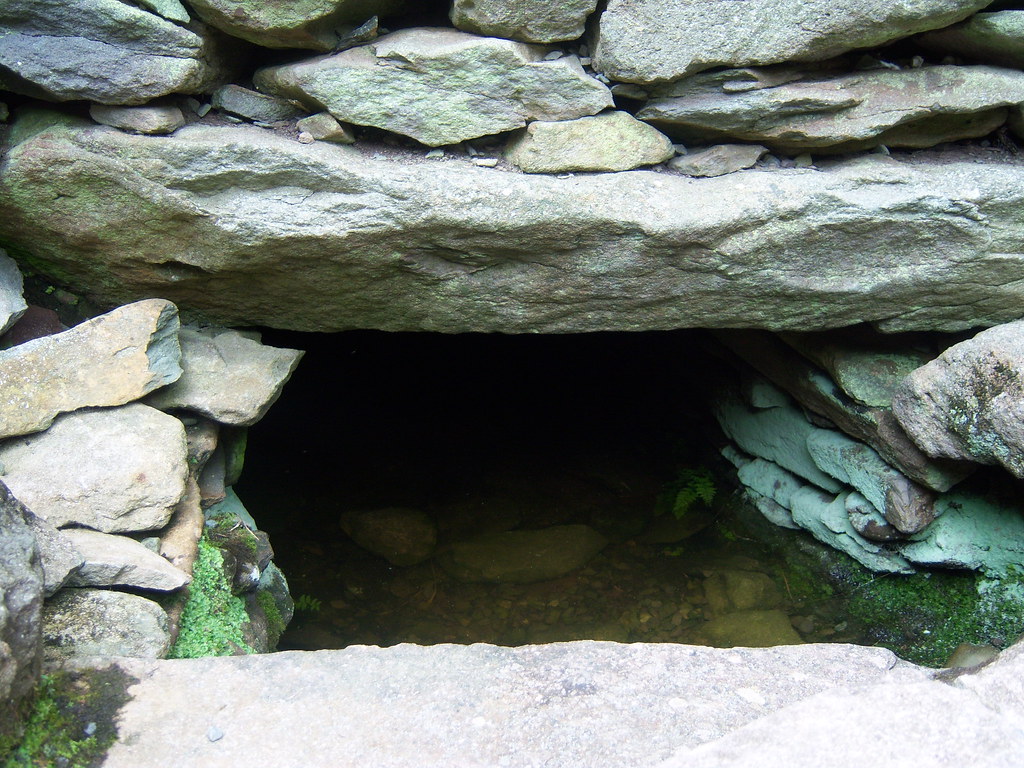
Beehive hut, Dingle Peninsula, Kerry: photo by PolosNPearls, 31 July 2008
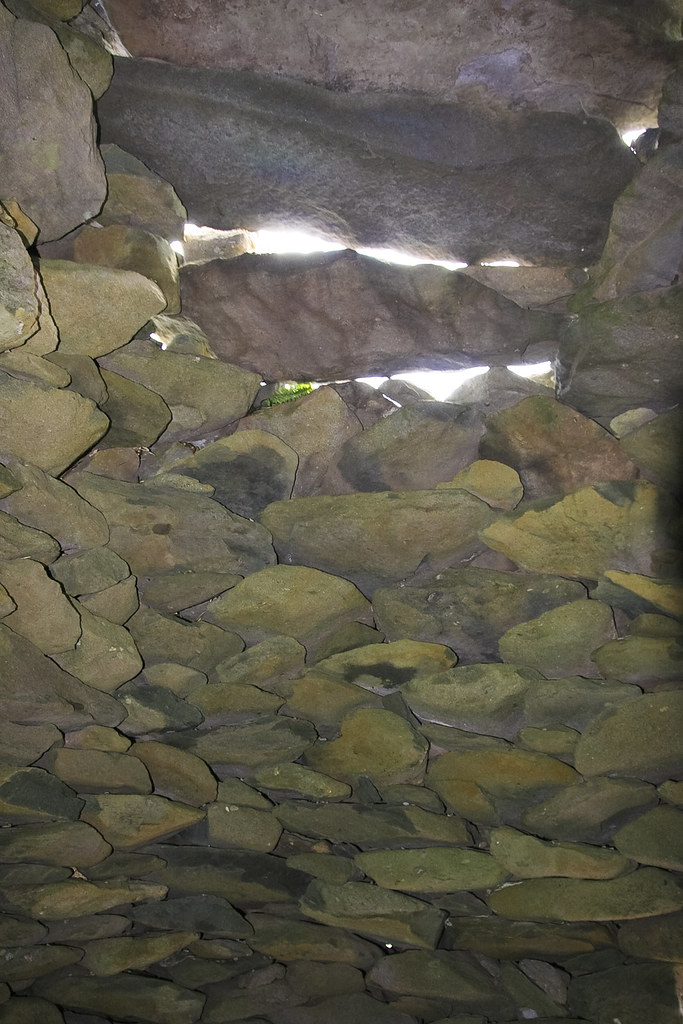
Corbelled roof of a beehive hut, Dingle Peninsula, Kerry: photo by Craig K. Gowans (txcraig75), 27 June 2007
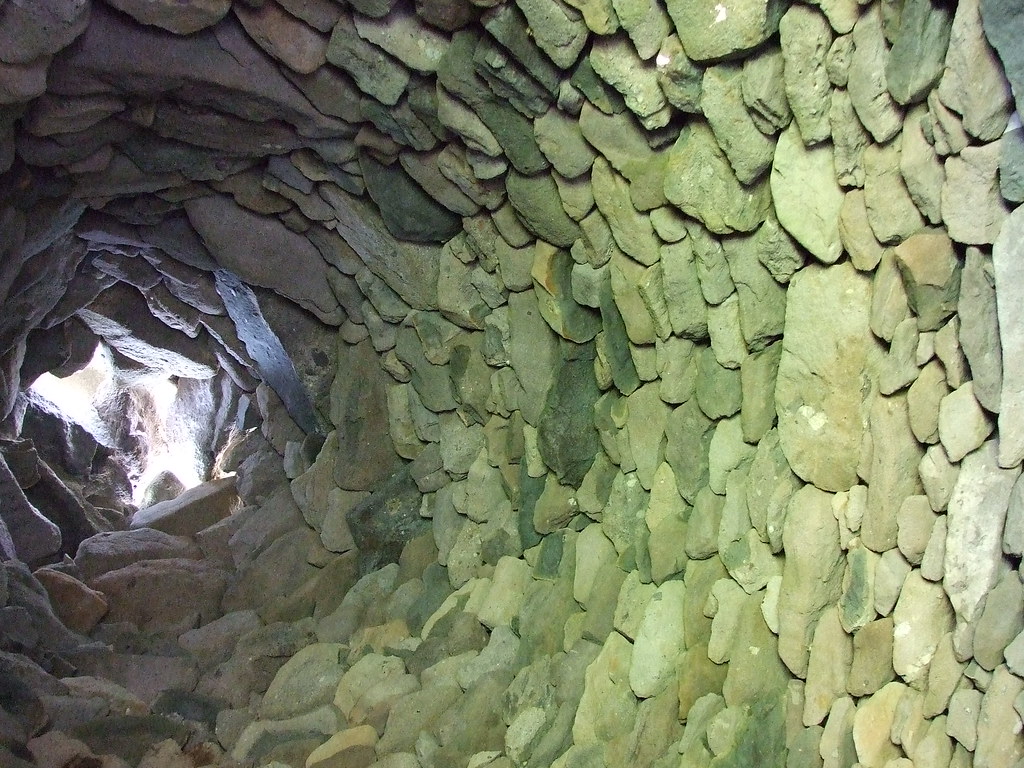
Corbelled roof of an intact beehive hut, Ventry, Kerry. Dry-stone construction. No mortar holds this together: photo by jen-the-librarian, 11 May 2008
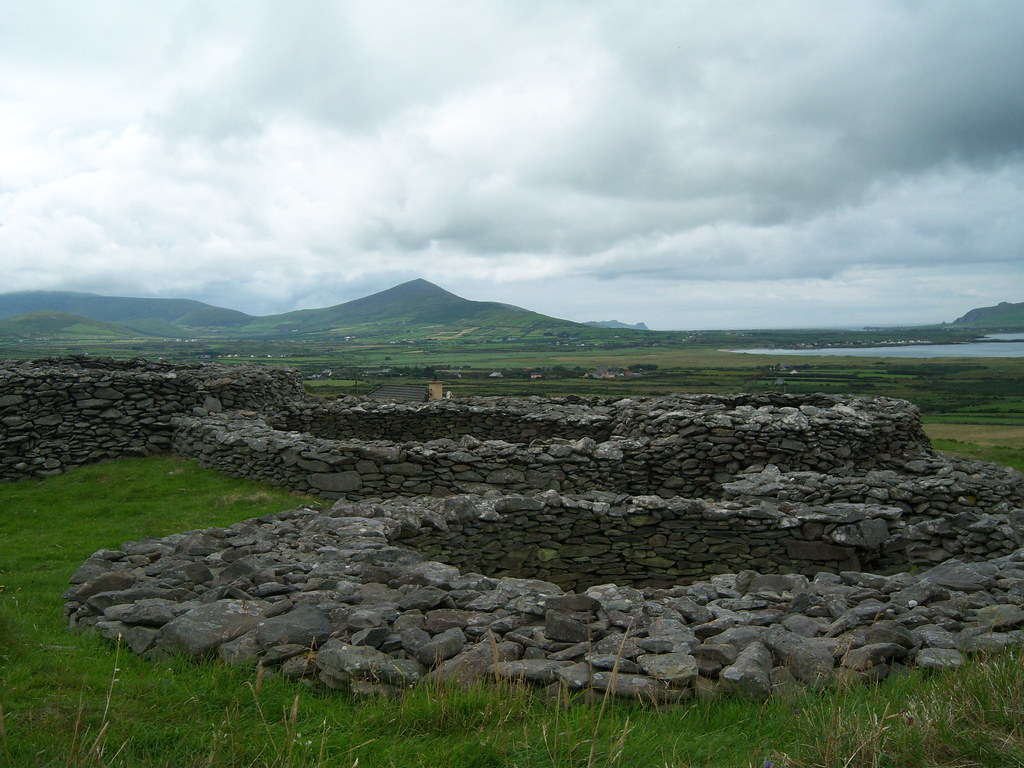
Beehive huts, Dingle Peninsula, Kerry: photo by PolosNPearls, 31 July 2008
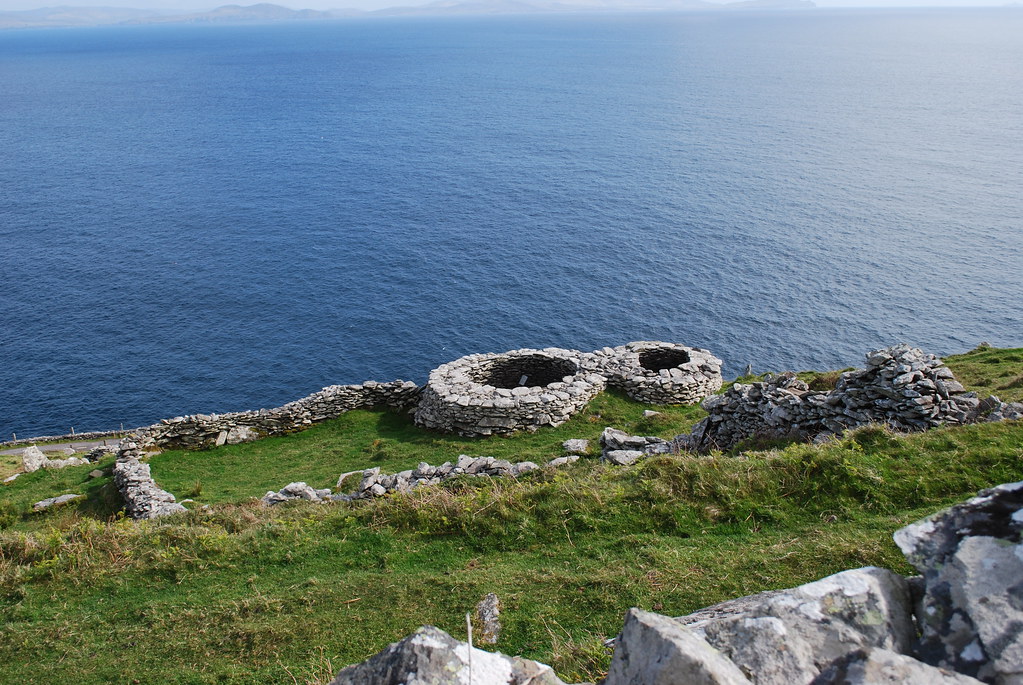
Beehive huts, Eagle Mountain, Dingle Peninsula, Kerry: photo by Aleksandra Piechorowska (olenka :)), 3 May 2009
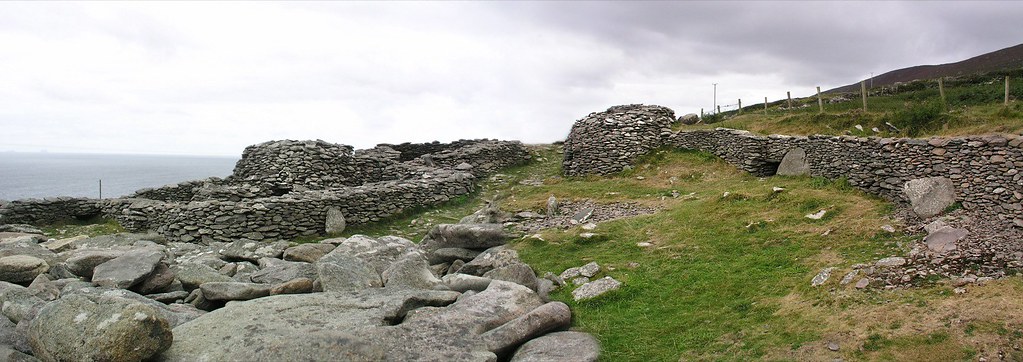
Beehive huts, Dingle Peninsula, Kerry: photo by Ken Osborn (misterken), 28 November 2003

Beehive huts, Dingle Peninsula, Kerry,. Also known as clochans. A clochan is dry-stone hut with a corbelled roof, dating from the early Middle Ages or earlier. Most archaeologists think these structures were built on the southwestern coast of Ireland since the Bronze Age: photo by Neal1960, October 2003

Beehive hut, Dingle Peinsula, Kerry: photo by Marion J. Ross, October 2005
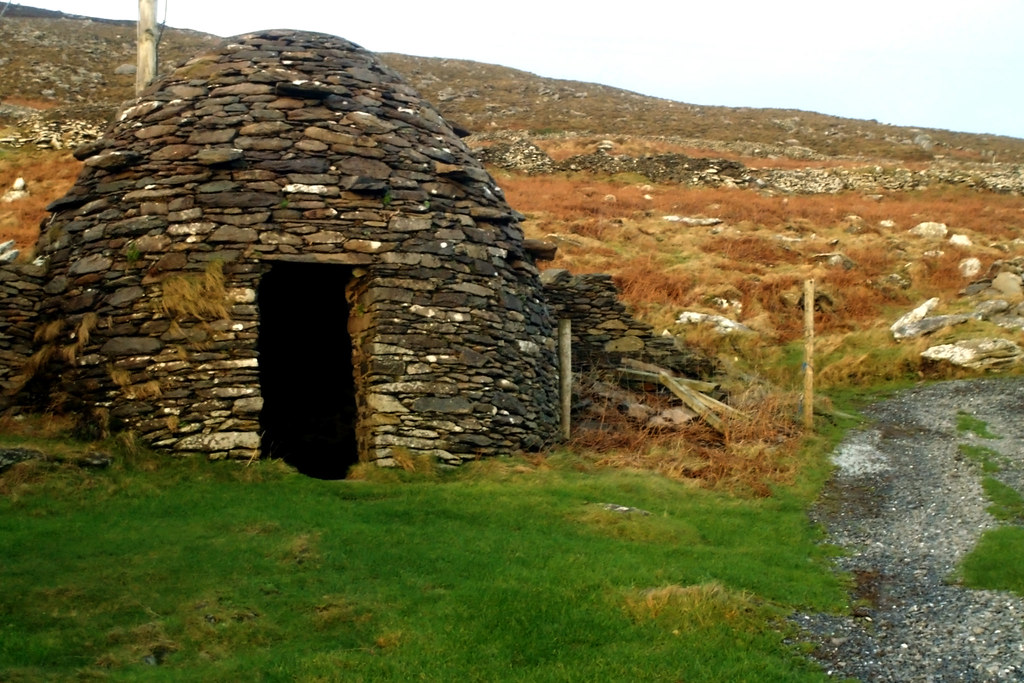
Beehive huts, Dingle Peninsula, Kerry: photo by Marion J. Ross, 30 December 2006
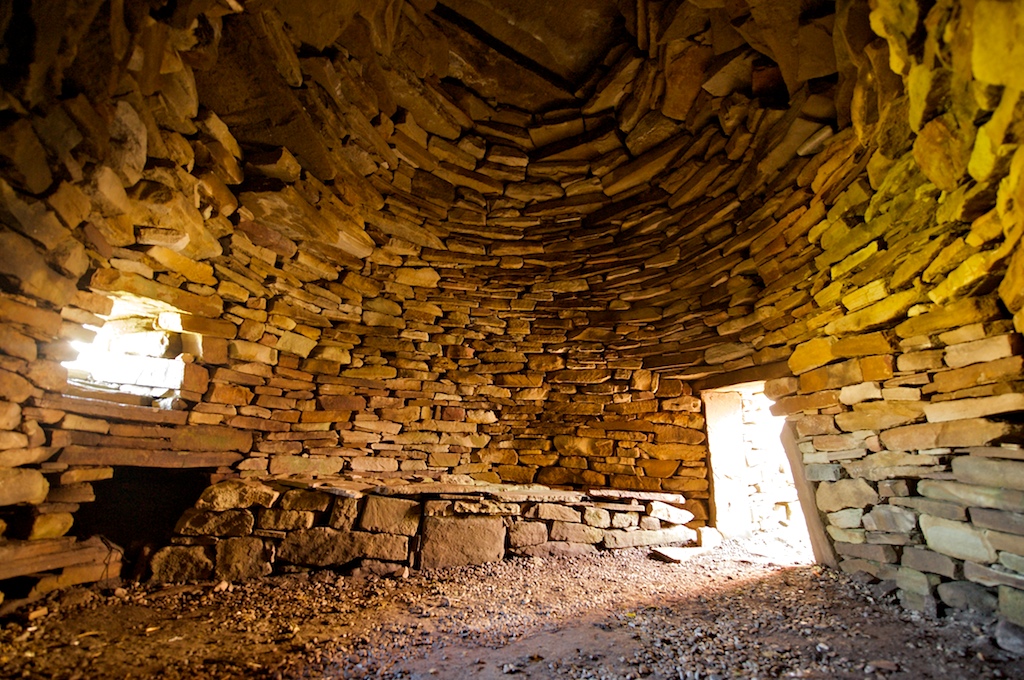
Celtic monastery, inside a beehive hut. A beehive hut at the 6th century Irish monastery of Inishmurry: photo by Jim Richardson (JC Richardson), 15 June 2006
In the final poem in The Brazen Serpent, 'Studying the
Language', Ni Chuilleanain brings the issues of architecture
and language together in the image of an early but enduring
architectural marvel: the beehive huts which dot the southwest coast of
Ireland. Constructed in the early Christian era of corbelled stone, and
occupied at times by individual hermits as well as members of monastic
communities, these huts have been inhabited into modern times.
'Studying the Language' describes the experience of seeing
them...
The speaker describes walking among the hermits, drinking where
they have drunk and noticing the chains on their feet. The final lines
are those of this poem's speaker, borrowed from the preface to
Thomas More's Utopia, but they can be read also as Ni
Chuilleanain's own: 'I call this my work, these decades and
stations--/ Because, without these, I would be a stranger here'. As the poem implies, studying the languages of people, and the
buildings in which they live, has been a major concern in all of Ni
Chuilleanain's work. The beehive huts, and the mysterious occupants
within, who endure long periods of silence, are a way into the past but
also a part of the present and a symbol of a life we can only speculate
about. The hermits, like the nuns Ni Chuilleanain writes about, live
both isolated and communal lives, sheltered by enclosing huts shaped
like the bee's hive...
'Studying the Language' takes on another meaning when we realize that beehive huts are found in the gaeltacht, in the same areas in Ireland as the ogham stones, repositories of a symbolic and early Gaelic language which is itself a mystery. A twenty letter alphabet which has created its own 'study', it is a storehouse of early Ireland, a language employed by scholars and druids but generally unknown to others. For a poet, the modern version of the druid, this language may be the ultimate mystery, embodying the secrets of Ireland's past. Again with Ni Chuilleanain, we come to an edge, a border, beyond which we cannot go -- the language is there, to be studied but never fully understood. As the gaeltacht embodies Ireland's two languages, we remember the final lines of 'A Glass House' which asks about the birds: 'How far do I need to travel / To understand their talk?' In the context of the beehive huts, found in the Dingle gaeltacht, the talk can be the Irish language, preserved within a small population. Whether we are talking of language, of families, of hermits, or of ruins, mysteries and secrets are at the centre of Ni Chuilleanain's work: 'these decades and stations--/ ... without these, I would be a stranger here' .
The architectural metaphor in the poetry of Eilean Ni Chuilleanain: Patricia Boyle Haberstroh, in Irish University Review: A Journal of Irish Studies, 22 March 2007

Puffin looking seaward from cliffside nest, Dingle, Kerry: photo by Matthew Cattell, 13 June 2006
'Studying the Language' takes on another meaning when we realize that beehive huts are found in the gaeltacht, in the same areas in Ireland as the ogham stones, repositories of a symbolic and early Gaelic language which is itself a mystery. A twenty letter alphabet which has created its own 'study', it is a storehouse of early Ireland, a language employed by scholars and druids but generally unknown to others. For a poet, the modern version of the druid, this language may be the ultimate mystery, embodying the secrets of Ireland's past. Again with Ni Chuilleanain, we come to an edge, a border, beyond which we cannot go -- the language is there, to be studied but never fully understood. As the gaeltacht embodies Ireland's two languages, we remember the final lines of 'A Glass House' which asks about the birds: 'How far do I need to travel / To understand their talk?' In the context of the beehive huts, found in the Dingle gaeltacht, the talk can be the Irish language, preserved within a small population. Whether we are talking of language, of families, of hermits, or of ruins, mysteries and secrets are at the centre of Ni Chuilleanain's work: 'these decades and stations--/ ... without these, I would be a stranger here' .
The architectural metaphor in the poetry of Eilean Ni Chuilleanain: Patricia Boyle Haberstroh, in Irish University Review: A Journal of Irish Studies, 22 March 2007

Puffin looking seaward from cliffside nest, Dingle, Kerry: photo by Matthew Cattell, 13 June 2006
The ancestors -- it's an old study...
ReplyDeletethere's a nice documentary about Maine puffins 'Fish out of Water'
ReplyDeleteDear T: You've gone from the bee loud glade to the beehive hut in one quick turn. Those photos make me want to be a Kerry hermit.
ReplyDeleteCor, those Maine Puffins appear to be nesting in... a beehive hut!
ReplyDeleteTerry, likewise here, but how long would we last? Without internet and all. Though perhaps the Kerry hermits have all that now. I did feel a bit bad to be saying such callous things the other evening about those wonderfully loud bees in Willy's imaginal glade (a sort of scarily over-amplified buzzing as I fancy it), and so, to chastise myself in proper monastic fashion, I've now arranged to have the gurney rolled in through the corbelled hatch of the beehive hut and can only report from here that their ancient glittering eyes are gay. The eyes of the ancient bees, I mean. 5000 years. They've seen it all.
hate to be the artless fume in the bathtub, but the poem really reminds me of that funny python skit where the hermits remain social and live in a cluster of caves (gossiping, etc).. lovely stuff tom.
ReplyDelete"Well, HE tried wattles -- and he came out in a rash."
ReplyDeleteLanny, you beauty. It's all in there -- the caves, the wattles, the crowd of chatty hermits, possibly a stray ancient bee-in-the-bonnet or two.
Lovely post Tom, the poem, the photos, the history and mystery, thank you for bringing it to us. It's the "knitting" of the stones that always got my attention. It reminded me always of the old ones in my clan and their persistence and patience in manual tasks.
ReplyDeleteI also want to be a Kerry hermit. Even though I thought the poem was about crabs at first (forgive me, I'm too littoral).
ReplyDeleteThinking about my Dad's childhood. He spoke Welsh until he left the Conwy Valley at nine years old. Lost now but for a few words.
ReplyDeleteTom,
ReplyDeleteWe could all use being Kerry hermits for a while..not because we are "so" sure of ourselves..It does exist..
Somewhere in that piece.
“It’s called the hidden life,” he says. “No wonder you weren’t aware of it"..
My awareness of random things has become systematic over the years..I can see that now.
P.S. I told you..These pantomime cross border derivations are exactly,nuclear in character..There may yet be more to observe
The people on my real father's side--the Calefs--hail originally from the West Country. They were farmers, probably.
ReplyDeleteThink about the life they must have led in pre-civilized times. What they ate. What they wore. How they kept dry during storms. They must have been a hardy lot.
The stones don't tell us much. Stacked up into mounds and rings and tiny caverns. We'll never have the indisputable answer.
Yes, the "knitting" of the stones. Amazing artisanal work when one pauses to imagine it.
ReplyDeleteA back channel note from a reader relates the experience of entering a beehive hut, standing under the corbelled roof and feeling more than a bit anxious lest the massive seemingly precariously balanced roof stones cave in (though they had held up pretty well for c. nine centuries by that point).
I've got to confess my first reading of the poem was along the same lines as Nora's.
And I've got to add that I'm not the only one.
"The 'chains' thing works until you start wondering about why they've got feet instead of whatever it is crustaceans have... claws? pincers?"
And now I fear my last several readings have been fatally contaminated with hilarity thanks to the Python Hermits skit suggested by Lanny opening up the whole issue of vulnerability to parody, but hey, why not, this isn't church, and it's our summer vacation.
Or at any rate it was during the immaculate conception of this post.
You might find this interesting -- the contemporary wall work of Ms. Shona McLeod: http://www.skye-stones.co.uk/slideshow.html
ReplyDeleteCurtis